![]()
Introduction
The SBE 41 CTD module was originally developed in 1997 for integration with a sub-surface oceanographic float called ALACE (Autonomous Lagrangian Circulation Explorer) (Davis, et. al., 1992). ALACE floats were neutrally buoyant at depth, where they were carried by currents until periodically increasing their displacement and slowly floating to the surface. At the surface, the ARGOS satellite system could determine its current position (http://www.argosinc.com/system_overview.htm). The long time-series of successive position data on hundreds of individual floats gave insights into deep ocean circulation.
Early in the evolution of ALACE floats, researchers added temperature and conductivity sensors to the float to obtain a temperature/salinity profile during the float's ascent to the surface. The ALACE float soon became known as PALACE (Profiling ALACE), and PALACE floats transmitted temperature and salinity data in addition to providing drift track data. However, the quality of the salinity data on early PALACE floats deteriorated quickly due to fouling. The Sea-Bird SBE 41 CTD module was developed in response to the scientific need for highly accurate salinity measurements that remained stable for the three to five year operational life of the PALACE float. The results have been truly remarkable. Today, SBE 41s are producing salinity data accurate to within 0.005 [PSU] for more than 3 years. The value of near-real-time oceanographic data transmission from multiple floats is evidenced by the ability of oceanographers to monitor and predict the influence of El Niño weather patterns on the surface of the North Atlantic Ocean (Riser, 1998).
The success of PALACE floats and the SBE 41 led to the Argo Program, which began in 1999 (http://www.argo.ucsd.edu/). The program goal was to establish and maintain a working population of 3000 floats dispersed throughout the world, transmitting near-real time temperature and salinity from the upper 2000 meters of the ocean. That goal was reached by the end of 2007; there are more than 3200 deployed floats as of February 2011, as shown on the float distribution map below.
Today, Sea-Bird manufactures approximately 1000 SBE 41/41CP CTDs per year, supplying more than 90% of the annual Argo program requirement as well as a growing market in non-Argo float applications.
|
|
|
Features and Specifications of the SBE 41/41CP Design
Sensor Calibration Standard Accuracy Stability Temperature ITS-90 0.002 deg C 0.0002 deg C/year Conductivity IAPSO Standard Seawater 0.002 (equivalent salinity) 0.001 / year (equivalent salinity) Pressure Deadweight tester & pressure reference 2 dbars 0.2 dbar
The CTD sensors and electronics (shown below) are mounted to an Argo top end cap (satellite whip antenna not shown).
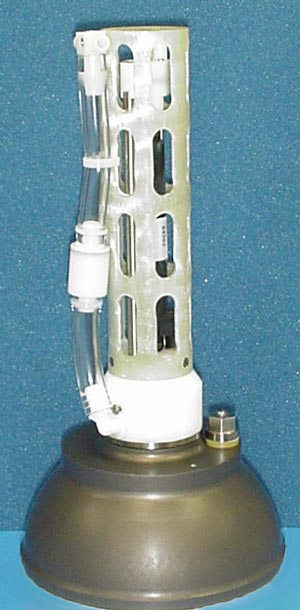 Photo A: Sea-Bird CTD module with guard installed. |
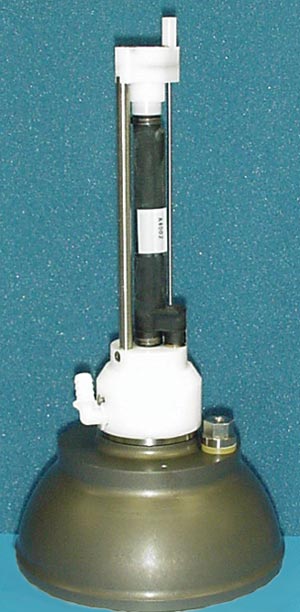 Photo B: Module with guard removed to show conductivity cell. |
|
Photo C: Module showing mounted PCB. |
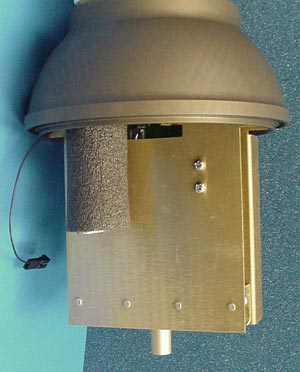 Photo D: Opposite side of Photo C, showing pressure sensor. |
SBE 41 or 41CP?
Both the SBE 41 and 41CP measure conductivity, temperature, and pressure, and can be equipped to also measure dissolved oxygen (see Recent Developments below). The sensors on the SBE 41 and 41CP are identical; the difference lies in the circuitry and sampling protocols:
For both the SBE 41 and 41CP, the system can be programmed to transmit all the data, or just the parameters of interest (C, T, P; T and P; P only; or C, T, P, and D.O.).
Recent Developments
SBE 41/41CP Manufacturing and Calibration
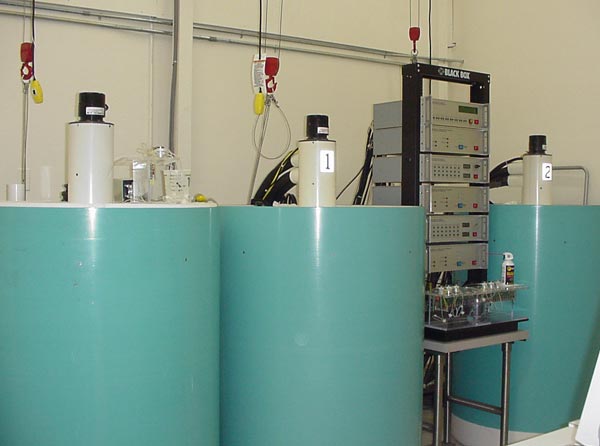
Argo CTD Calibration Baths and Controller
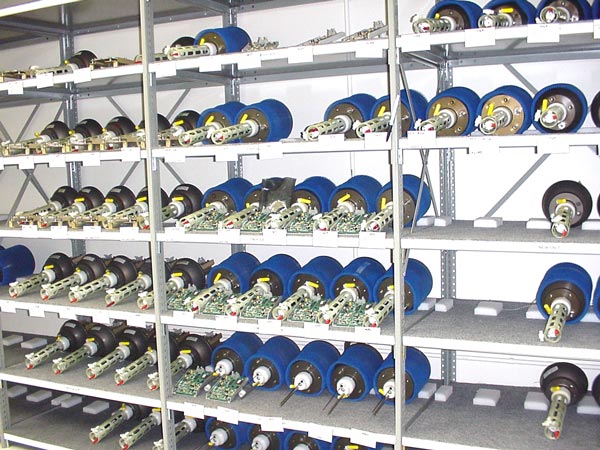
Argo "CTD heads" in various stages
Additional Information
(At right, Module mounted on a float at WRC)
Argo Float Druck Pressure Sensor Micro-Leak Problem and Warranty Replacement (2009)
Information on performance of SBE 41 / 41CP:
-
Accuracy and Stability of Argo SBE 41 and SBE 41CP CTD Conductivity and
Temperature Sensors (2008)
Information on development of a Surface Temperature
Salinity sensor:
- Measurement of
Salinity and Temperature Profiles through the Sea Surface on Argo Floats
(December 2008)
-
STS: An
Instrument for Extending Argo Temperature and Salinity Measurements through the
Sea Surface (March 2008)
General information about Argo floats:
- Teledyne Benthos,
Inc. (formerly Webb Research)
-
WOCE Subsurface Float Data Assembly Center (WFDAC).
- Argo
videos
- Robot buoys are
taking the ocean's pulse, Seattle Times, April 2, 2008.
Information on Oxygen sensors integrated with the SBE 41 / 41CP:
- SBE 43I brochure / specification
sheet
-
Assessing the Calibration Stability of Oxygen Sensor Data on Argo profiling
floats using routine WOCE monitoring data from HOT (2008)
-
A Year of Oxygen Measurements
from Argo Floats (2003)
References
Davis, R.E., D.C. Webb, L.A. Regier, and J. Dufour (1992) "The Autonomous Lagrangian Circulation Explorer (ALACE)", Journal of Atmospheric and Oceanic Technology, V9, 264-285.
Riser, S.C. (1998). "The Distribution of 18-Degree Water in the North Atlantic During the Autumn of 1997 and the Winter of 1988", AGU 1998 Ocean Sciences Meeting Presentation OS11J-04.
![]()
Sea-Bird Home Phone: 425-643-9866 Fax: 425-643-9954 E-mail: seabird@seabird.com